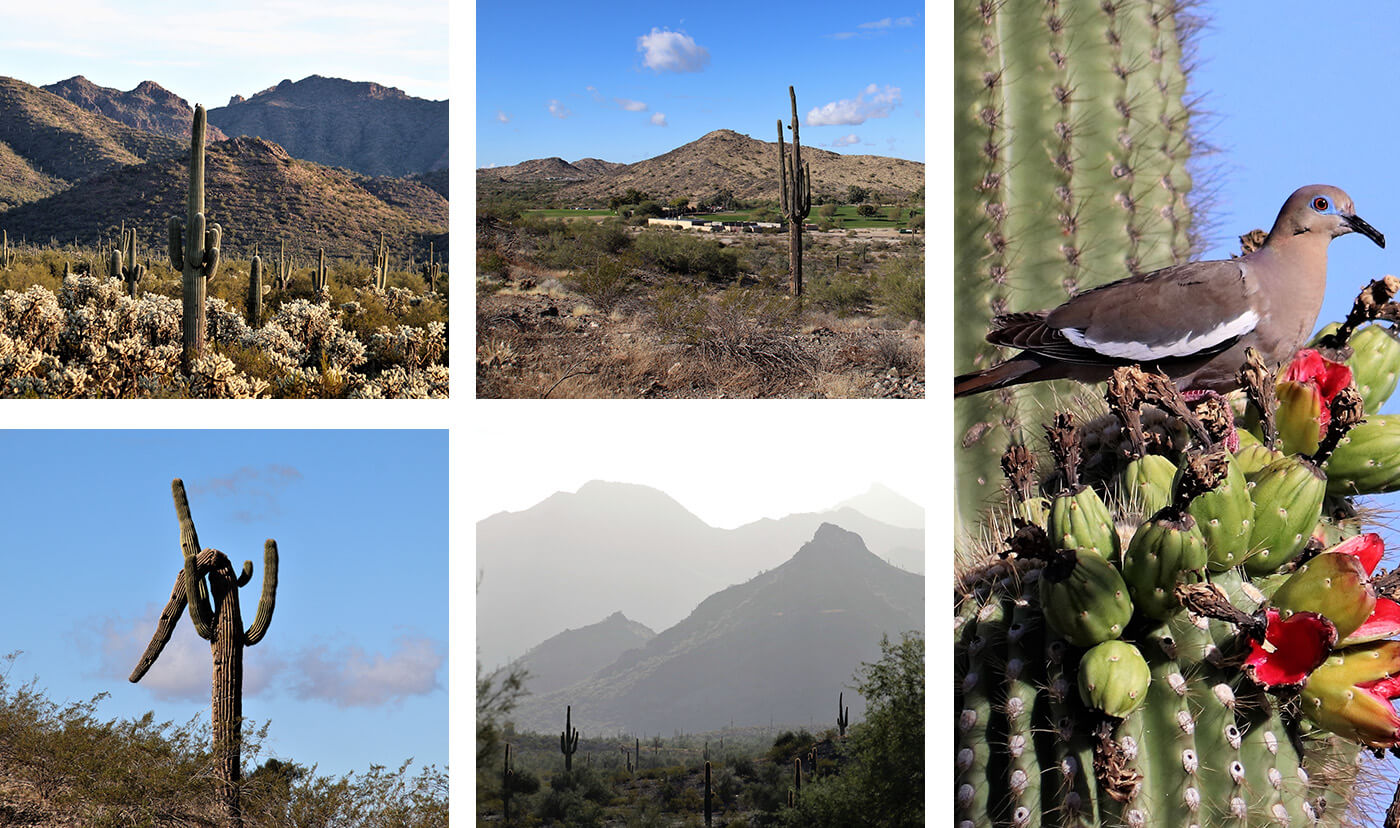The saguaro cactus is a treasured symbol of Arizona’s desert landscape and the American West, with the saguaro cactus flower as Arizona’s state flower and the cactus wren designated as Arizona’s state bird. Saguaros dotting the Sierra Estrella Mountains can grow to be over 40 feet tall and live for hundreds of years. However, with the recent heavy rains in the West Valley some hikers and homeowners in Estrella have noticed some of these desert giants have toppled over, or seem in distress. Here’s a bit of background and what you can do if a saguaro in your yard looks like it needs support.
Saguaros grow slowly, it might take 50 to 75 years for them to grow their first arms. Arms are important to them because they store extra water. After 100 years, they usually have several arms. After 200 years they have many arms.
Saguaros, a plant from family cactaceae, like a hot, dry climate and do not need a lot of water to survive. Most cacti are equipped with ribs which allow the plant to expand like an accordion when water is plentiful and then shrink in times of drought. A large saguaro can hold over a thousand gallons of water. During dry times, it can pull from this source to grow and produce flowers and seeds.
During extremely wet seasons, however, saguaros may experience stress as the ground around them becomes very soft and with the added weight of the new water, the heavy cactus may fall over or lose an arm.
Natural vs. Landscaped Environments
Many cactus species can survive the rain, even heavy and prolonged rainfalls, while others can rot very quickly when exposed to too much rain. In a natural habitat, the saguaro grows slowly, typically no more than a few inches per year, developing a deep and expansive root system which firmly anchors the cactus for hundreds of years. But in a landscaped environment, abundant water causes dramatic growth spurts and shallow roots. The condition may contribute to a saguaro’s early death.
This Winter’s Rain Damage
If a cactus is suddenly exposed to a large amount of water like Arizona and Estrella has had this year, after a prolonged period of drought, it may absorb water too quickly and swell, which can cause it to burst or crack. This can lead to physical damage that could cause the cactus to fall over.
Recently, a giant Saguaro cactus that had lived for some 200 years was toppled by heavy rain in Tucson.
“Powerful seasonal rains can quickly make an impact on the desert landscape,” Arizona State Parks said on their Facebook page. “The loss of this huge, iconic 200-year-old Saguaro on the Romero Ruins trail overlooking the Sutherland wash at Catalina State Park in Tucson is one change regular park visitors can’t miss.”
However, the saguaro, which will stay where it landed, will provide habitat and food for many creatures as it decomposes.
Precautions for Saguaros on Landscaped Areas
–As an Estrella homeowner what do you do if the saguaro in your landscape is leaning?
Don’t ignore a saguaro cactus leaning to one side, as it could be a sign that it will fall soon. Instead, call a saguaro removal expert to examine the plant and determine whether it can be safely left in place.
You cannot intentionally remove a saguaro, which is a protected native plant, without a permit; you need permission from the Department of Agriculture to do so. But that’s only if the saguaro is still standing. You can remove a fallen saguaro on your property at any time.
–How do you tell if your saguaro needs water?
A good rule of thumb is to look at the space between the ribs of the cactus. If you cannot get one or two fingers between the ribs or if the skin gives way when you press it, the cactus needs water. The skin on a well-hydrated plant will be firm to the touch. The Saguaro requires about 10 inches of water annually.
Overall, the recent rains provide important relief here in the West Valley but being mindful of its effect on the treasured saguaros is important whether at home or hiking amidst these peaceful sentinels of the Sierra Estrella Mountains.
Find your new home at Estrella.com and discover why 7,600 families already call this diverse, welcoming West Valley master-planned community home. Located in Goodyear, Arizona amongst pristine mountains and a dramatic desert landscape, Estrella amenities include multiple Residents’ Clubs, resort-style pools and a waterpark, 72 acres of lakes, 65-plus miles of paths and trails, the Yacht Club of Estrella, the award-winning Nicklaus Design course at the Golf Club of Estrella, community welcome center Casa Lucero, and more than 50 neighborhood parks.
Sources:
phys.org, a web-based science, research and technology news service
pbs.org, a membership organization that, in partnership with its member stations, serves the American public with programming and services of the highest quality, using media to educate, inspire, entertain and express a diversity of perspectives.





